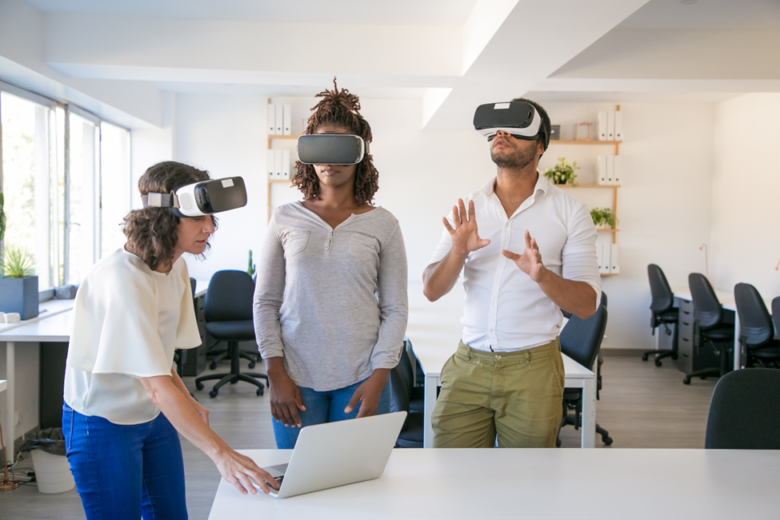Augmented Reality Development – A Step Ahead

Augmented Reality Development is a digitally and technically smarter approach used to enrich user experiences. Unlike virtual reality, the real world experience in augmented reality is enhanced using computer assisted and digital tools. To put it simpler, the real world experiences are enriched by the addition of sound effect, visual effects or through the usage of any other sensory stimuli.
The primary purpose of Augmented Reality Development is to bring into light all the amazing possibilities that can be turned into reality with the use of technology and digitization. The long texts that are time taking to read have been converted into digitally optimized videos so that more information can be gained in lesser time. Complex calculation and data analysis have now been turned miraculous with the use of technology. So augmented reality shows how the same things you are doing can be done more efficiently and effectively.
The most common areas of application of augmented reality include marketing platforms and tools, from creating digital content to the usage of technicalities in advertising campaigns, in facilitated learning environments, for the entertainment purposes like museums and places like Disneyland. There is also a widespread use of it in research and data analysis, translation as well as in putting artificial intelligence to practice. Communication has also been rendered easier with the use of augmented reality and people at work have made their work faster and more efficient with the applications of it across all areas from construction and manufacturing concerns to banking and education sector.
How is augmented reality different from virtual reality?
Since there is a continued confusion between augmented reality and virtual reality, let us first take a look at what is different between the two and why do they both co-exist when we already have the other option available.
While virtual reality is the almost replacement of real-life experience, augmented reality only augments, or enhances the already existing real life experience. Digital and computing tools are often used for this augmentation in augmented reality while virtual reality makes use of simulations for creating artificial environments. It would not be wrong to say that virtual reality development is almost 70 to 75 percent virtual, whereas augmented reality is only 20 to 25 percent virtual. Virtual reality is more of a fictional approach whereas the sole purpose of augmented reality is to keep it as close to reality as possible.
A little mind boggled? Here is the snapshot of all the described differences for a quick understanding.
| Virtual Reality | Augmented Reality |
| Replaces real life experience | Only complements the real life experience |
| Uses simulation technique | Uses computer and digital tools and techniques |
| Fictional approach | Practical approach |
| 70 to 75 percent virtual | Only 20 to 25 percent virtual |
The Pros and Cons of Augmented Reality Development
Like virtual reality, augmented reality development too has its own advantages and disadvantages. To conclude which approach is better than the two may not be possible because both are meant to be used for different purposes and intentions. So if we talk about augmented reality development, the major advantages of it include:

- It enhances the learning capabilities and makes the learning process faster and easier.
- Levels of efficiency, effectiveness and accuracy have been enhanced using augmented reality techniques in complex activities like data analysis.
- There are a number of applications that work using the augmented reality techniques and these applications are continuously updated and improved to enrich the user experience.
- Opportunities for sharing of experience have been interestingly increased with the use of augmented reality.
However, the downside of using Augmented Reality Development may include:
- Higher costs associated with the implementation of augmented reality, which mostly makes it challenging to be implemented where it is needed the most i.e. learning environments.
- Depending largely on the performance of the computer assisted and digital tools utilized.
- There is a serious threat to privacy violation of the security aspect is neglected in the process of augmented reality development implementation.
Augmented Reality Development Platforms and tools
The top trending augmented reality development tools and software packages include Wikitude Augmented Reality SDK, Google ARCore, PaleBlue Augmented Reality Solutions, Apple ARKit and Easy AR.
